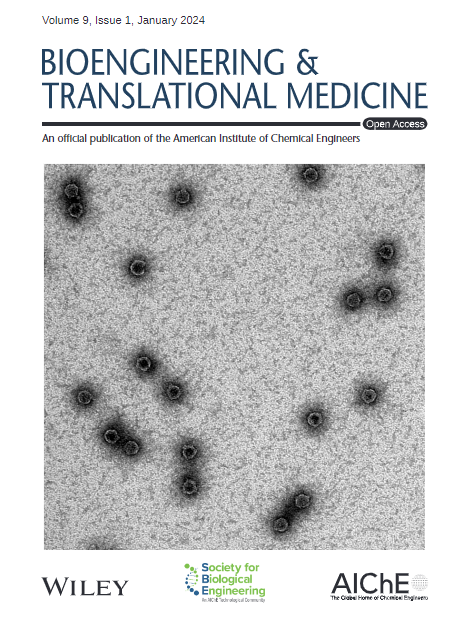一种预测高级别浆液性卵巢癌患者细胞治疗结果的计算工具的开发和验证
IF 5.7
2区 医学
Q1 ENGINEERING, BIOMEDICAL
引用次数: 0
摘要
高级别浆液性卵巢癌(HGSOC)的治疗往往是无效的,由于频繁的晚期诊断和耐药的发展。及时为每位患者选择最有效的药物(组合)将改善结果,然而,临床医生目前可用的工具不适合这项任务。我们在这里提出了一个计算模拟器能够概括细胞对卵巢癌治疗的反应。描述了硅框架的技术发展,以及其在细胞系和患者衍生的实验室模型上的验证。校准程序,以确定最能概括每个病人的反应参数也提出。我们的结果支持在临床前研究中使用该工具,为HGSOC的行为和进展提供相关的见解。他们还为其作为个性化医疗工具的使用提供了概念证明,并支持疾病监测和治疗选择。本文章由计算机程序翻译,如有差异,请以英文原文为准。
Development and validation of a computational tool to predict treatment outcomes in cells from high‐grade serous ovarian cancer patients
Treatment of High‐grade serous ovarian cancer (HGSOC) is often ineffective due to frequent late‐stage diagnosis and development of resistance to therapy. Timely selection of the most effective (combination of) drug(s) for each patient would improve outcomes, however the tools currently available to clinicians are poorly suited to the task. We here present a computational simulator capable of recapitulating cell response to treatment in ovarian cancer. The technical development of the in silico framework is described, together with its validation on both cell lines and patient‐ derived laboratory models. A calibration procedure to identify the parameters that best recapitulate each patient's response is also presented. Our results support the use of this tool in preclinical research, to provide relevant insights into HGSOC behavior and progression. They also provide a proof of concept for its use as a personalized medicine tool and support disease monitoring and treatment selection.
求助全文
通过发布文献求助,成功后即可免费获取论文全文。
去求助
来源期刊

Bioengineering & Translational Medicine
Pharmacology, Toxicology and Pharmaceutics-Pharmaceutical Science
CiteScore
8.40
自引率
4.10%
发文量
150
审稿时长
12 weeks
期刊介绍:
Bioengineering & Translational Medicine, an official, peer-reviewed online open-access journal of the American Institute of Chemical Engineers (AIChE) and the Society for Biological Engineering (SBE), focuses on how chemical and biological engineering approaches drive innovative technologies and solutions that impact clinical practice and commercial healthcare products.
 求助内容:
求助内容: 应助结果提醒方式:
应助结果提醒方式:


